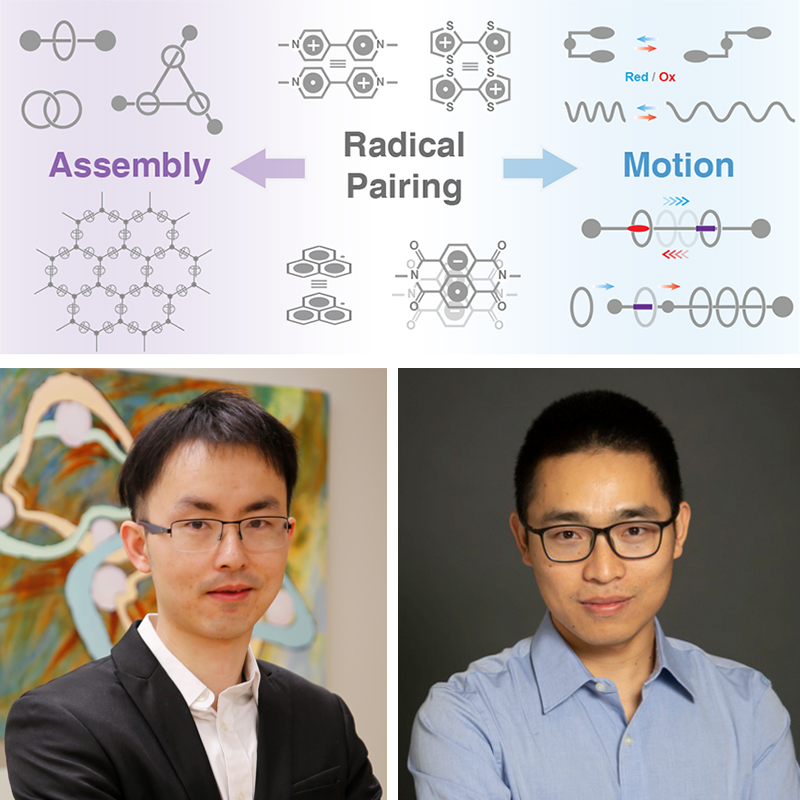A review article entitled Radical-Pairing-Induced Molecular Assembly and Motion has been published in Nature Review Chemistry by Kang Cai and Long Zhang.
Free radicals pervade all aspects of chemistry, from synthetic mechanisms to materials science to biological chemistry. For some conjugated radicals, they may tend to form multiple-centered π-bonded, spin-paired dimers, a process which is referred to “radical pimerizations” or “radical-pairing” interactions. Compared with other types of noncovalent bonding interactions, the unique electronic, magnetic optical, and redox responsive properties of the conjugated π-radicals render radical-pairing interactions very appealing for applications in various areas of chemistry and materials science.
The review begins with a summary of several types of radical pairs and the approaches to enhance radical recognition within a variety of host molecules. Then, the authors surveyed the applications of this relatively new mode of bonding, as a means of activating switching events, available to supramolecular self-assembled systems and mechanically interlocked molecules (MIMs). In the following part, they have highlighted the recent advances made in harnessing radical-pairing interactions in the design and synthesis of artificial molecular pumps, and finally, provide some suggestions about the future directions for the uses of radical-pairing interactions in contemporary chemistry and materials science.
The review was written collaboratively by Kang Cai, Long Zhang, R. Dean Astumian and J. Fraser Stoddart. Kang was a former Postdoctoral Fellow in the Group. He has just started his independent academic career in China. He became a Professor of Chemistry at Nankai University on December 1, 2020. Long is currently a postdoctoral researcher in the group, working on radical-based molecular pumps and motors. Dean is a Professor of Physics at University of Maine.
Congratulations to Kang, Long, and the Team! Nice review!
Pictured below – The Graphical Abstract for Radical-Pairing-Induced Molecular Assembly and Motion with authors Kang Cai and Long Zhang:


